One of the prizes for winning the WBC last year was a trip to visit the Probat factory in Emmerich, Germany, where we also bought our own roaster. My year was quite busy, though, so I never made it down there while I had the reigning title. So when James Hoffmann was crowned as the new champion in Tokyo we made plans to go at the same time.
So finally Casper and I took a plane to Düsseldorf, where we met up with James and Anette (2006 World Cup Tasting Champion and James' girl friend - for those not in-the-know) and then to the town of Emmerich close to the Dutch border. There our good friends Inga Schaeper and Arno Schwenk welcomed us to the Probat Werke.
From left to right it's Arno Schwenk, Casper, James Hoffmann, Anette Moldvaer and Inga Schaeper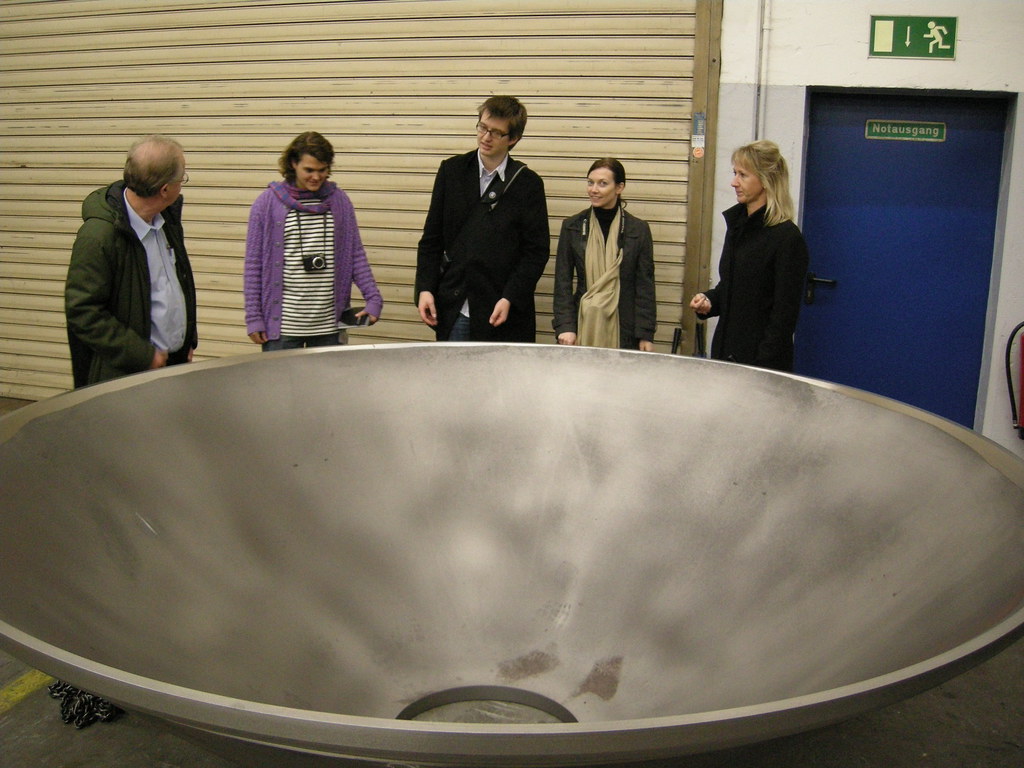
Probat was started in 1868 by three families, whose descendants still own the company. Probat has a stunning 57% market share, but deliver to both very large corporations and small roasteries such as ourselves. Fun fact: 7 out of 10 cups of coffees enjoyed globally is roasted on a Probat.
After arriving and having lunch we had a tour through the whole factory. It's impressive to see the roasters being built. Probat makes all sorts of roasters, not just for coffee, but also for nuts and cocoa for example. We saw the different models of coffee roasters that they make: Tangential, Centrifugal and Drum. We quickly realized how small our roaster is compared to the much larger commercial systems.
Here's Casper next to a huge roaster, which is for cocoa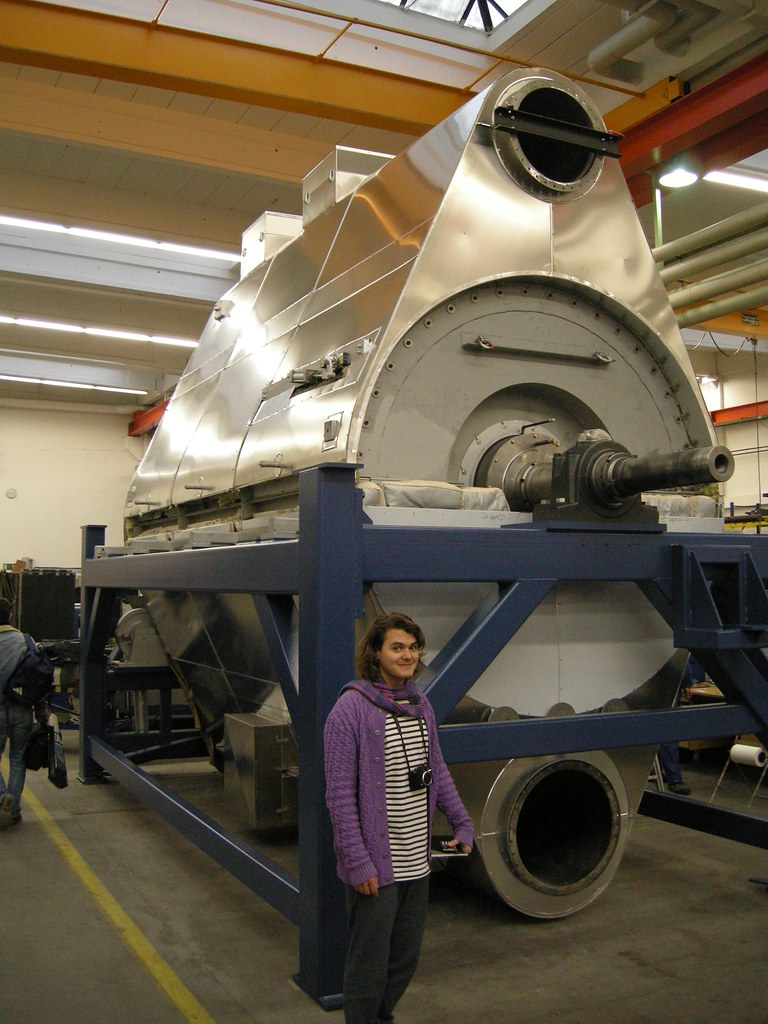
We also saw their labs, where they do a lot of very scientific testing. Lots of it is way out of my league in terms of chemical understanding. But of course all the cool lab gear triggers something in every geek.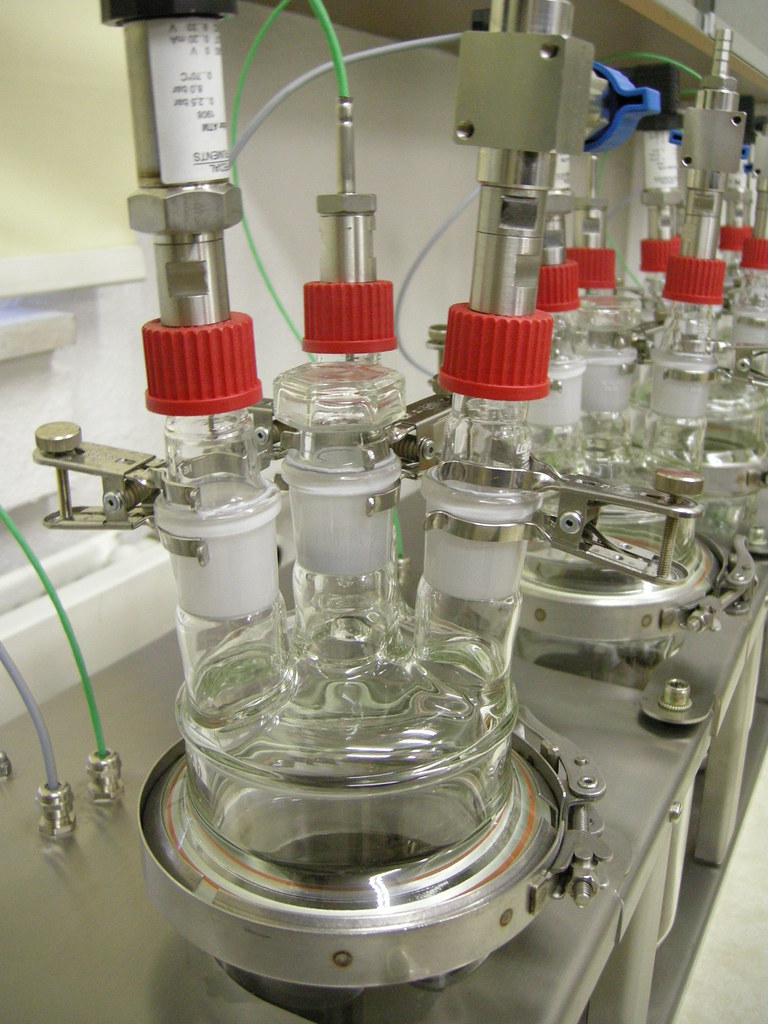
Probat has a 3-group La Marzocco GB5 set up with a Mahlkönig grinder and we saw an opportunity to have James pull us some shots from our espresso. In turn Casper and I also went behind and we all got coffeed up properly.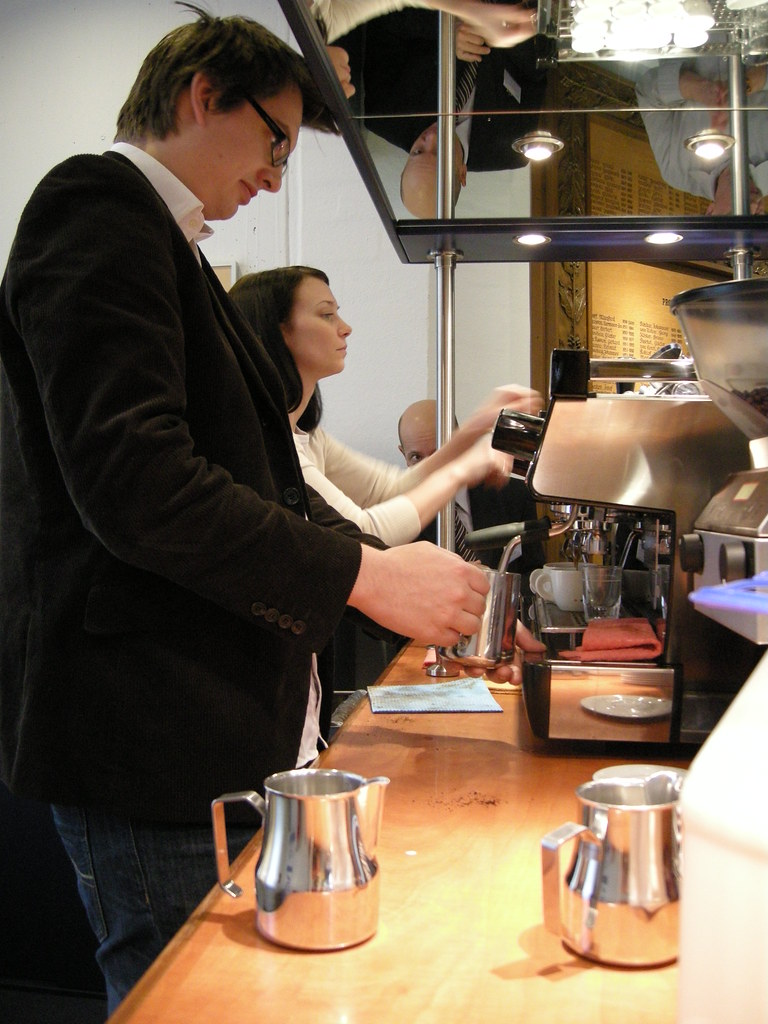
On the second day we got to roast on a Probatino. I think all of us has roasted on one before, but this one was a little different in that you had more control over the flame adjustment. I picked a Zambian Peaberry to roast, which I decided to run through a screen sorting first as the beans varied quite a bit. And also because I hadn't tried the screens before. There were quite a lot of defects in that coffee too, so I hand sorted it for a while. It was all in vain, though, because when I roasted it I was afraid of taking it too fast and ended up with a very slow and much too dark roast. On the other hand Casper stopped his roast of a Nicaraguan too soon. Fortunately, after begging, I got to roast another batch which turned out a lot better. 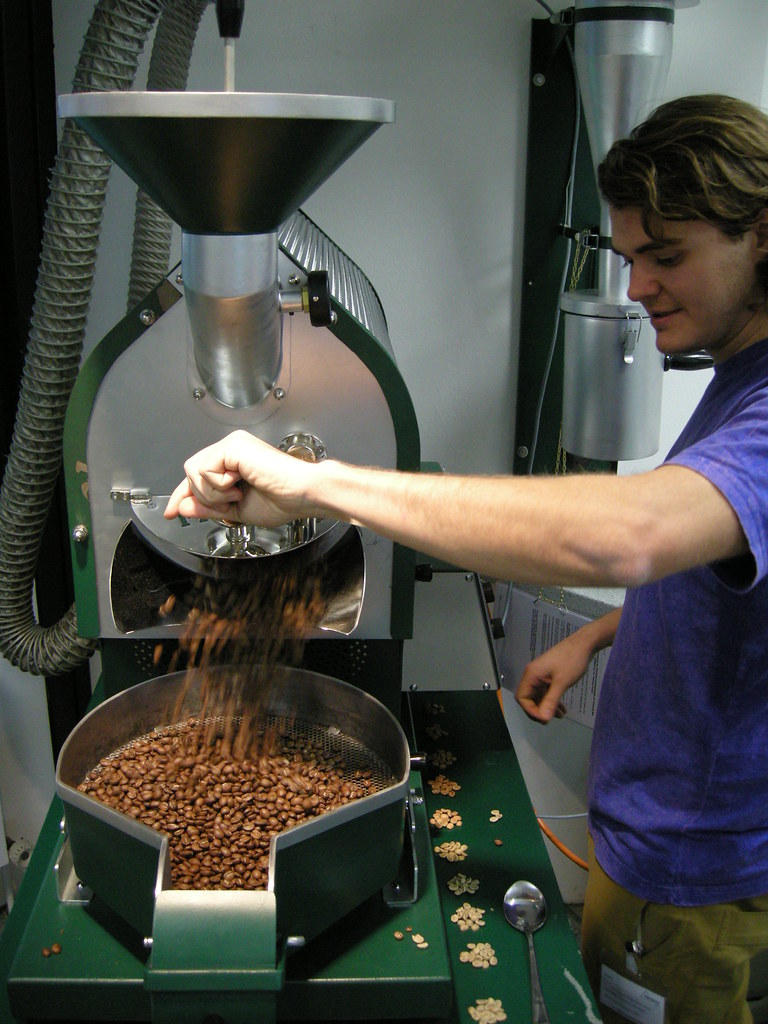
We cupped all our different roasts - Seven in total. The coffees were all commercial grades and not really the same quality any of us are used to, so we weren't too fond of any of them. I'd have to say the Sidamo James roasted was the best, though.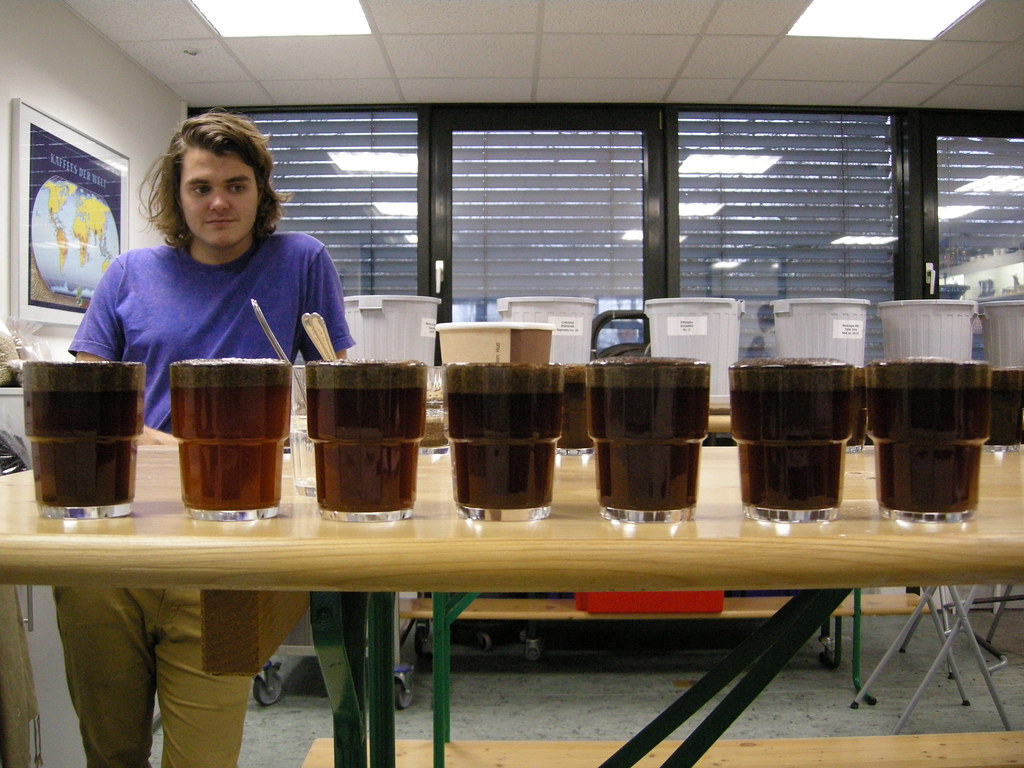
One of the most interesting parts of the programme was visiting Probat's Coffee Museum. Lots and lots of old roasters and grinders. We saw the first mass produced roasters and a lot of strange and interesting designs. I love the look of these old cast-iron machines, that would still work if you fired them up. Probat has done a good job of making the museum interesting for anyone interested in coffee and I'd highly recommend going if you have the chance.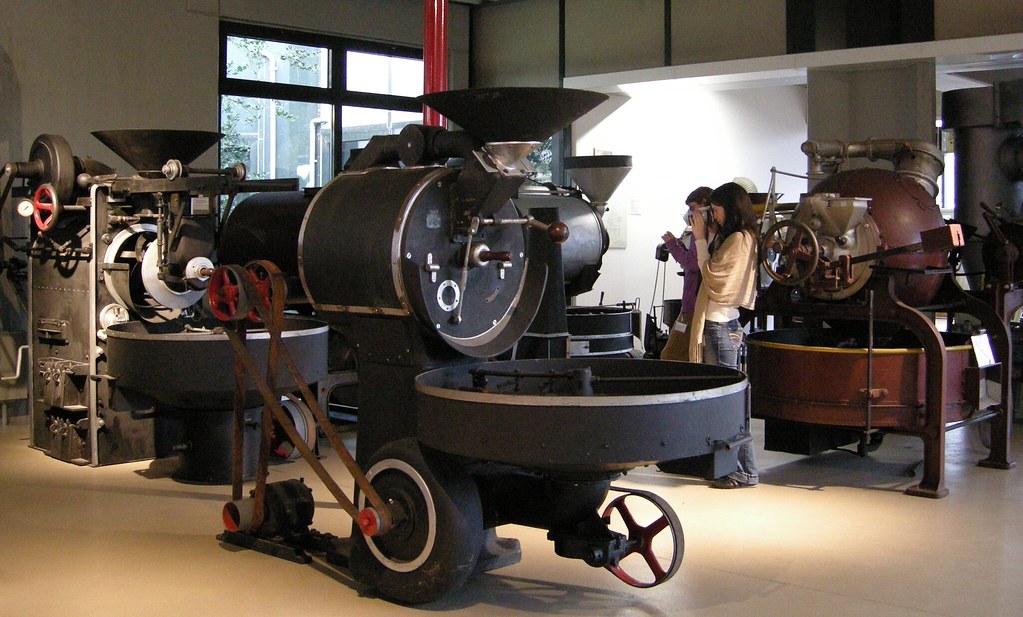
Casper and I had a great trip and it was really good to see Anette, James, Inga and Arno again. Thanks to Probat for everything!
Check out my Flickr set for more pictures
Friday, November 30, 2007
Visit to Probat
Subscribe to:
Post Comments (Atom)

4 comments:
What do you mean when you write, "The coffees were all commercial grades and not really the same quality any of us are used to, so we weren't too fond of any of them"?
what is the difference between "commercial" coffee that you sell at CC and the ones you tested at Probat?
thanks,
alexander
Hi Alexander
Yes, I guess that was a bit unclear. Our coffees are what the SCAA would chart as Specialty Grade (less than 5 defects pr 300 g and no primary defects) and the coffees we roasted were probably Exchange Grade (9 - 23 defects pr 300 grams). The people at Probat said it was 'good commercial coffee' for filter blending - but that's to me a long way from the finest single origin coffees out there. Hope that clarified it a bit.
great!
thanks klaus for the clarification!
a
Post a Comment